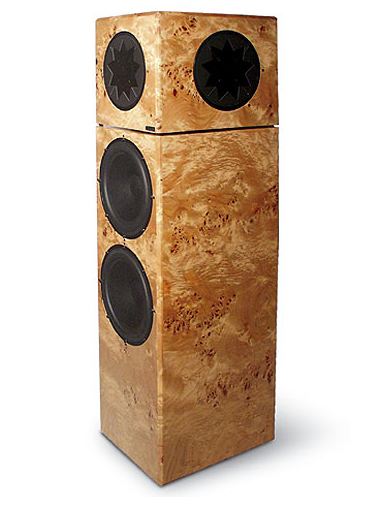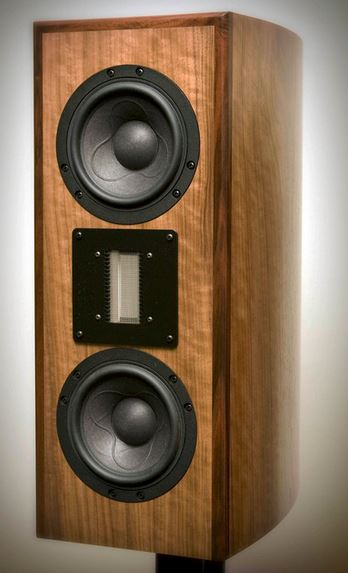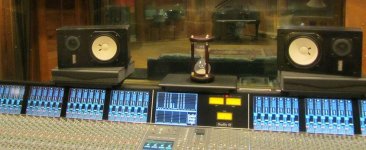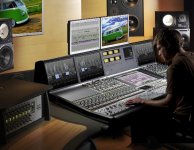anatech, that´s what i said. You can not downloud the paper any more direct.
You can register though. Even i do not do that. I hate to be registered. I am already on Google and Facebook. Nobody whould hire me when he reads my resume.
Fortunately i am independent.
You can register though. Even i do not do that. I hate to be registered. I am already on Google and Facebook. Nobody whould hire me when he reads my resume.
Fortunately i am independent.
billsburv, i also use a tigher spacing sometimes. Problem is that customers at home do not like that at all.
They buy speakers for 100.000,- §, no problem, and put them in the far field so that they are " invisable ". Whould you do that for your house or for your car ?
Actually who started that brain wash about placement in the first place ?
Looks pretty, sounds bad, sort of.
They buy speakers for 100.000,- §, no problem, and put them in the far field so that they are " invisable ". Whould you do that for your house or for your car ?
Actually who started that brain wash about placement in the first place ?
Looks pretty, sounds bad, sort of.
billsburv, i also use a tigher spacing sometimes. Problem is that customers at home do not like that at all.
They buy speakers for 100.000,- §, no problem, and put them in the far field so that they are " invisable ". Whould you do that for your house or for your car ?
Actually who started that brain wash about placement in the first place ?
Looks pretty, sounds bad, sort of.
I have no idea who started it. It's like the idea that babies should be fed every 4 hours. That was copied for 100 years before someone checked the sources and found it was just a convenient number pulled out a hat.
Currently I have a 'difficult' room. There is only one place for speakers so there they go. But when I auditioned them they were very widely spaced in a nice big room and the auditory illusion was stupendous. I still hope to be able to afford a big enough space to get that again one day. For now I fight the room, but would recommend anyone who can set their speakers up 3m from side walls and sit 2m away to try it.
Ah speaker placement in a living room.
I used Joachim's audio physics method long ago, until I didn't use it any more.
Now I use this:
Speaker Asylum: Iron Chef Speaker Set Up Protocol by tubesforever
And I find it more pleasant for listening and with better sound. I found that with AP close listening any head movement changes the sound quite a lot.
I used Joachim's audio physics method long ago, until I didn't use it any more.
Now I use this:
Speaker Asylum: Iron Chef Speaker Set Up Protocol by tubesforever
And I find it more pleasant for listening and with better sound. I found that with AP close listening any head movement changes the sound quite a lot.
Joachim audio physics method is not what is being discussed here... the ratio discussed here is 2.85/2Ah speaker placement in a living room.
I used Joachim's audio physics method long ago, until I didn't use it any more.
Now I use this:
Speaker Asylum: Iron Chef Speaker Set Up Protocol by tubesforever
And I find it more pleasant for listening and with better sound. I found that with AP close listening any head movement changes the sound quite a lot.
I dont see much difference between audio physics set up and Iron chef... the ratio is almost identical and very close to 2/2.
Whatever floats your boat. After 100dth of discussions i do not care much any more, sorry.
I am especally not interested to defend my standpoint.
Others are better, faster, more clever.
It is not about what is right and what is wrong. Listening to music is a very subjective experience.
I am especally not interested to defend my standpoint.
Others are better, faster, more clever.
It is not about what is right and what is wrong. Listening to music is a very subjective experience.
Hi Joachim,
This interests me since the toe in I use is very slight. I do get what you are saying about debates on this. I'm pretty sure that there is an endless stream of topics for debate, and those debates become less interesting as the years go by.
-Chris
This interests me since the toe in I use is very slight. I do get what you are saying about debates on this. I'm pretty sure that there is an endless stream of topics for debate, and those debates become less interesting as the years go by.
-Chris
It's really the old nearfield versus farfield issue, isn't it?
Studios always used the cheapish Yamaha NS-10 in the nearfield (ie middle of the room) to monitor the sound balance for most listeners close to the speakers.
Toed in, for better frequency response. Because most basses and tweeters fall off very badly off-axis. It's almost like headphone listening.
It's quite cool to build the speakers into the wall. But then you hear the room as much as the speaker. So it needs treatment with rockwool and such. Maybe even random rocks at the lively far end, and some absorbent stuff behind you.
Like in gardening, flowers and speakers tend to fly to the edges when the Wife or GF gets involved. And maybe that's not a bad thing. They are a trip hazard when placed in the middle of the room. 😀
Studios always used the cheapish Yamaha NS-10 in the nearfield (ie middle of the room) to monitor the sound balance for most listeners close to the speakers.
Toed in, for better frequency response. Because most basses and tweeters fall off very badly off-axis. It's almost like headphone listening.
It's quite cool to build the speakers into the wall. But then you hear the room as much as the speaker. So it needs treatment with rockwool and such. Maybe even random rocks at the lively far end, and some absorbent stuff behind you.
Like in gardening, flowers and speakers tend to fly to the edges when the Wife or GF gets involved. And maybe that's not a bad thing. They are a trip hazard when placed in the middle of the room. 😀
Attachments
Hi Steve,
NS-10M for near-field use. The NS-10's always have paper stuffed across the tweeter for obvious reasons. But NS-10(M)'s sound a lot better than a pair of awful-tones (auratones) which are used to mimic the old TV speakers. Some use them for level setting. There isn't a standard for the studio main monitors unless you want to use JBL 412's or similar. Try and get those things flat. Isn't going to happen.
-Chris
NS-10M for near-field use. The NS-10's always have paper stuffed across the tweeter for obvious reasons. But NS-10(M)'s sound a lot better than a pair of awful-tones (auratones) which are used to mimic the old TV speakers. Some use them for level setting. There isn't a standard for the studio main monitors unless you want to use JBL 412's or similar. Try and get those things flat. Isn't going to happen.
-Chris
Maybe because it's not representative of what most of us listen to?Funny is that they do not use the onwalls any more.
I ought to show you a picture of your Manger speakers which took retirement recently at my favourite speaker fan's £100,000 home cinema, Joachim:

Oddest speakers I've ever listened to. Spookily cold and undistorted sound. Almost electrostatic.
All built into the wall now, not the exact drivers:

Digital and equalised LR4. Works best in 5.1 not stereo, because dispesion is better for all listeners, rather than the sweet spot. The 5X MTM's have rockwool around them. Bass is handled by 4X 15" built into closed box brick at about 10 cubic feet. Just the bottom end foundation, because it just adds a deep acoustic, rather than thumps. Listening to Berlin Philarmonic's live video feed of Beethoven's Ninth, as well as Pink Floyd's Dark side of the Moon's horrible alarm clocks. 😀
There is more work going on right now so maybe i will update the text even more.
It has to do with tilting the speakers backwards and using an even more extreme spacing more like 3 / 1.5
hi
ive been trying to go even past the 2.85/2. now im at 3/2 and even 3.25/2.
Id like to know more info about 3/1.5
Unless you have a incredibly well treated room, farfield will be much more coloured then nearfield.It's really the old nearfield versus farfield issue, isn't it?
Last edited:
This is within your control. If reflections can contribute the same response balance as the direct sound, if there is a freedom from strong/early discrete problematic reflections so that the reverberant field is only that. Moving toward the walls can delay the early reflections as long as the speakers are designed for it.Unless you have a incredibly well treated room, farfield will be much more coloured then nearfield.
😕If reflections can contribute the same response balance as the direct sound, if there is a freedom from strong/early discrete problematic reflections so that the reverberant field is only that.
For a giggle I did a quick google and found a book called 'home recording studios:build it like the pros' by Rod Gervais. No idea who this Rod is, but his setup is reference elsewhere and has the std triangle BUT with your head 40cm in front of the point of the triangle.
Running that for your speaker spacing gives a distance from the middle of your head to each speaker of 150cm for 185cm spacing of the speakers. Which is in spitting distance. That is just one quick check. So shows its not forgotten amongst people who care, even if the exact figures are open to debate (like everything else in audio) 🙂
Rod gervais is well known at gearslutz in the acoustic forum.
Ive been living with joachim 210cm/150cm and Im trying Rod gervais 185cm/150cm.
Ive settled for 190cm/150cm. Joachim's spacing resulted, in my system, in weak phantom center.
150cm/150cm result in a image that feels right but seems it lacks air a little. After having lived for over a year with that spacing, going wider definitely feels like a improvement.
190cm/150cm is the sweet spot for now.
Last edited:
well, im back with joachim 2.8/2 spacing
blown away, I dont think im interested again in trying the "normal" equilateral
blown away, I dont think im interested again in trying the "normal" equilateral
What about horns....
I suspect that horns require further distance to allow the larger spacing between drivers to integrate, and their more directional sound supports a further listening distance.
Retsel
I suspect that horns require further distance to allow the larger spacing between drivers to integrate, and their more directional sound supports a further listening distance.
Retsel
They say that about horns, I'd like to know what they mean.to integrate
Well after reading all of this moving around of speakers to get the best spaciousness, best clarity, best everything why not go and design yourselves a good open baffle loudspeaker. I did years ago and have never looked back at 'something in a box'. You get all the clarity and spaciousness you want and bass is not a problem either with a little equalization.
C.M
C.M
- Status
- Not open for further replies.
- Home
- Loudspeakers
- Multi-Way
- Joachim Gerhard speaker placement! WOW and I need more info

